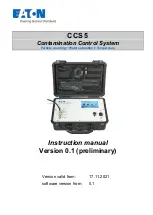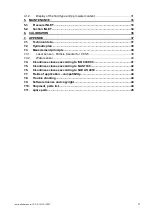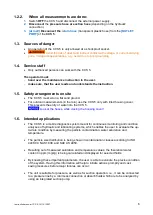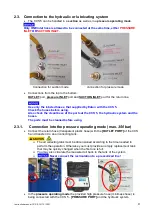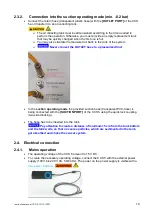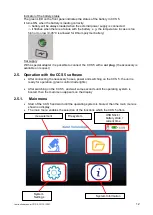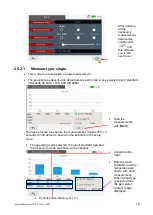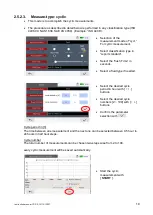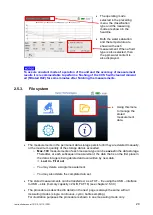
Instruction manual CCS 5, 15/ 10/ 2021
5
1.2.1.
Hazards by working at the hydraulic or lubrication system
May occur the following hazards:
•
uncontrolled discharge of the pressure fluids
•
accidental machine movements
•
thrown or bursting of parts
•
skin toxicity
•
noise emission
Uncontrolled discharge of the pressure fluids
Possible leaking of the hydraulic fluid:
In case of breakage of pipes, upon release of fasteners that are still pressurized, damages of
the hydraulic hose lines or by exposure to excessively high forces.
The consequences can be:
•
eye damage
•
skin penetration
•
fire hazard
•
risk of slipping
•
environmental hazards, such as penetration of the fluid into the soil / groundwater
Connection of the hoses from the CCS 5 to the hydraulic or lubrication system, see chapter
2.3.
Accidental machine movements
•
Accidental operation of command or control devices. (buttons, levers, proximity switches,
and so on)
•
Error in control
•
Failure
of components due to for example: excessive system pressure, material fatigue…
•
Contamination of the hydraulic fluid
Thrown or bursting of parts
May be a result of:
•
excessive stress of components (e.g: high operating pressures or pressure peaks)
•
material fatigue (e.g: demolished hydraulic hose assemblies)
Skin toxicity
•
Through contact with hydraulic fluids.
Follow the skin protection plan!
•
Vapors of pressure fluids can cause respiratory irritation, if inhaled.
Noise emission by
•
pump units
•
the work process noise generated by machines
Use hearing protection at hazardous noise levels.
One or more hazards can occur simultaneously depending on maintenance work.
Accordingly, several safeguards must be applied.
•
Note the five-finger rule of fluid technology during maintenance work!
1. Separate power supply
2. Secure against re-supply
3. Depressurized the system (also the pressure storage), lowering or supporting of the
uphold loads, reduce residual energy
4. Check the release pressure (pressure free)
5. Prevent hazards by neighboring plants.

